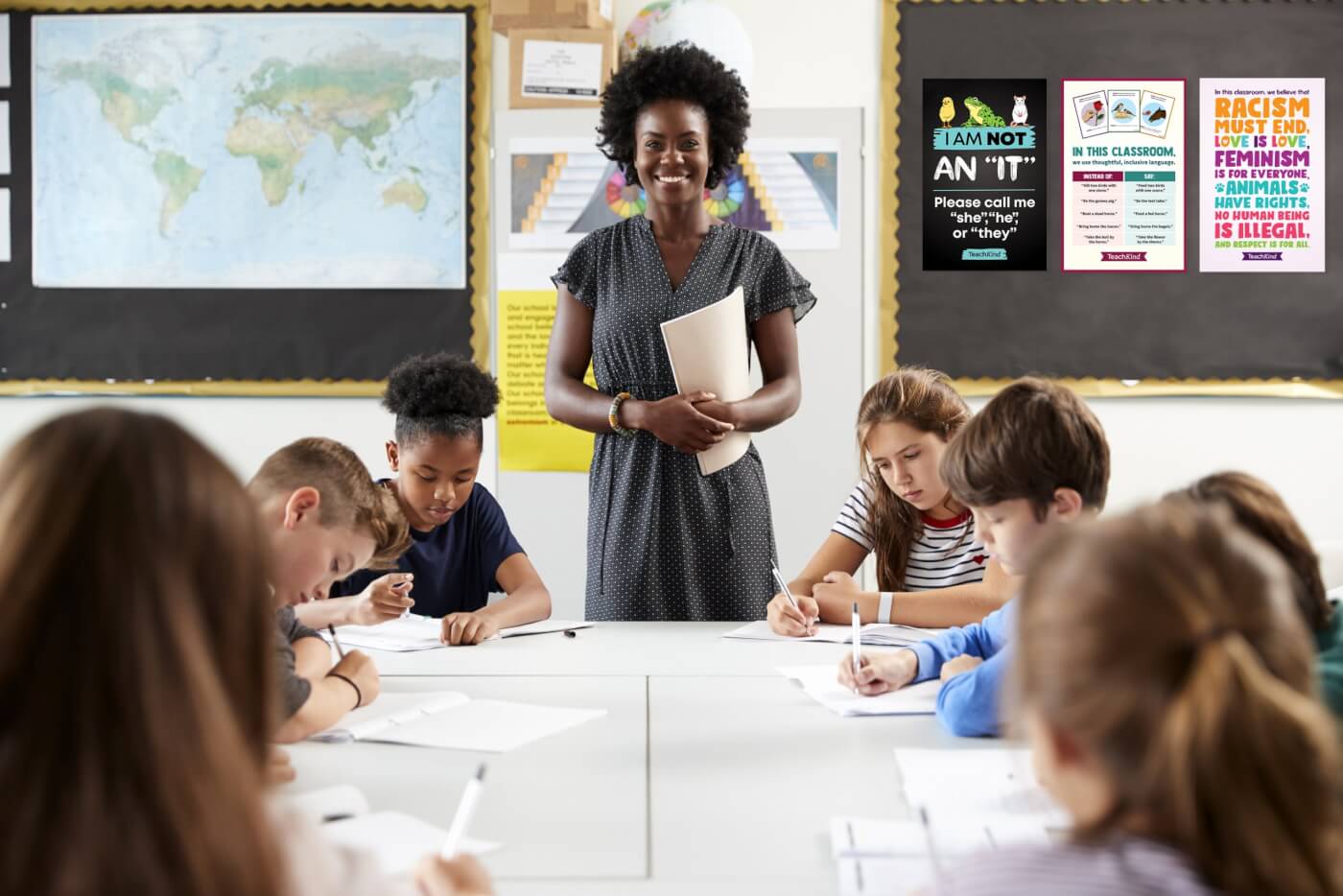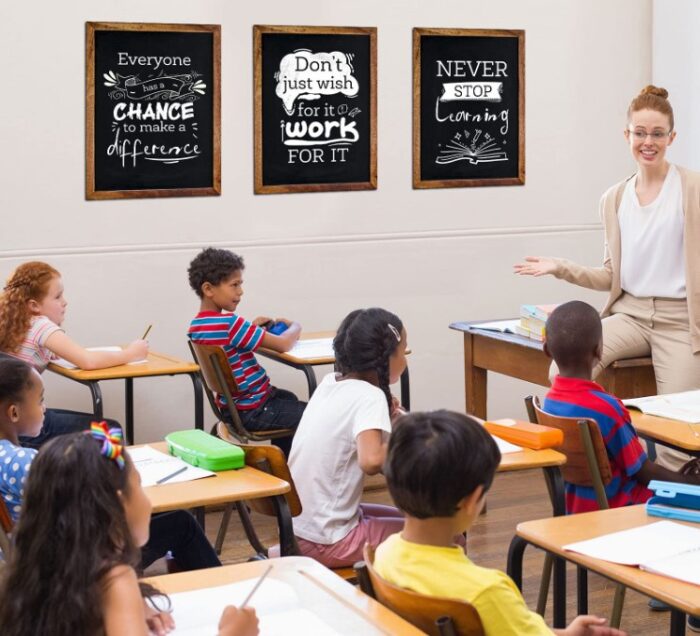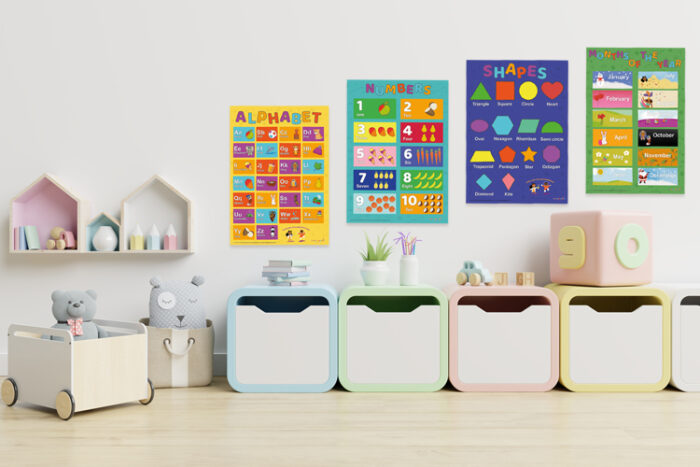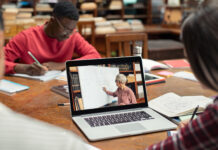
Technology has now successfully taken control of the contemporary age and has seized control of the traditional educational system. Engaging students and igniting their love for learning has become significantly difficult since the advent of technology.
The world continues to evolve rapidly, so educators must take the initiative to transform their teaching approach. Incorporating technology into the educational system has been a blessing in disguise for educators worldwide.
Technology can help simplify tasks for educators at a significant rate. For instance, an educator can simplify tasks such as grading assignments, making worksheets, planning lessons, and tracking student attendance with the click of a button.
The right resources are all an educator needs to elevate their teaching method significantly. Educators may incorporate the use of an educational poster template — StoryboardThat provides numerous templates to create eye-catching posters that will indefinitely intrigue their students.
Activities that surround the essence of Arts and Crafts have always intrigued students. Such activities develop the creativity of students and help them learn in an engaging yet effective manner. After all, a contemporary switch to a traditional means of learning would work in your favor.
However, there are several different ways an educator can use posters within a classroom. In this blog post, we delve deeper into the various ways to use educational posters in a classroom to elevate your teaching space ten folds.
What Are the Different Ways to Use Educational Posters?

Vibrant colors and fancy fonts do the trick and manage to captivate a student’s attention in a short period. Poster-creating and poster-making are typical activities that numerous educators incorporate into their classrooms.
Educational posters serve as a platform that holds tremendous power. Posters can market, spread a message, persuade, educate, inform, and motivate. Additionally, educational posters serve as an incredible learning tool and can be of immense power when in the hands of an educator. They are an excellent means to stimulate critical engagement.
Below, we look over a few innovative ways to incorporate educational posters into a classroom.
Highlight Classroom Rules and Expectations Using Posters
Posters can effectively catch a student’s attention and help preserve their interest in a particular area. An educational institute is never limited to inducing knowledge. When an institute is established, it is embedded with the responsibility to nurture a student’s personality and instill responsibility within the student.
Therefore, establishing clear and defined rules is essential in a classroom. To create an environment that promotes learning, an educator must clearly define classroom rules and regulations. To do so, it is critical that the rules are displayed clearly and visibly and can be interpreted with ease.
Displaying posters highlighting the rules of a classroom and what educators expect from students in a visible manner helps students ensure that students are aware of the rules. In addition, rule and regulation posters can be helpful if a situation arises and may be referred back to when needed. By doing so, an educator can ensure that disruptions within the classroom are kept to a minimum.
While deciding where to place these posters, it’s best to display them at a focal point in the classroom. By doing so, students may view the rules and regulations constantly, and the poster would serve as a reminder of what the teacher expects from them. Use poster to:
Make Your Class a Hazard-Free Place

Enforcing safety is crucial within a classroom. However, students can be tedious and tend to have a short attention span. Therefore, to ensure that they avoid risky locations within the room and stick to safe practices, creating a visual aid such as a safety poster and hanging it in the classroom would be a great decision.
Posting safety posters in certain areas of the classroom is an incredible step towards ensuring that your children feel safe within the class, helps avoid risky situations, and ultimately reduces the number of accidents. Additionally, posting such posters would help the educator teach more effectively. These posters are typically most effective when placed in potentially hazardous areas that students may be exposed to.
Colorful and vibrant posters with minimal yet accurate images would be the best approach to guarantee that the posters resonate with the students.
Ensure Effective Learning
Science has established that individuals learn through five different learning styles – auditory, visual, multimodal, kinesthetic, and written. Young children are often inclined towards imagery, which means that posters are an incredible way of teaching students.
An educator may dedicate a particular soft board or a wall in their classroom to posters. These posters can help aid a student’s learning journey in numerous ways. For instance, to reinforce vocabulary and content that takes place throughout the day. Additionally, posters can help define the learning that would take place within the classroom.
Furthermore, educators may use educational posters for reference during a lesson. Students may represent their ideas visually by creating posters with their classmates. Making posters with peers is an excellent way of teaching children the importance of teamwork and collaboration. Poster-making facilitates teamwork and creative thinking.
Additionally, making a poster with classmates effectively tests a student’s retention and assesses their knowledge about a topic. Therefore, this would ultimately create opportunities for active discussion in the classroom and help them gain a different perspective on what they are studying.

Conclusion
There is no doubt that technology has dominated the educational workspace. Technology is a powerful weapon in the hands of an educator that helps promote teamwork and collaboration and can help create an engaging learning environment. By incorporating the ways we have mentioned above, there is no doubt that your classroom will be a more interactive and safer location for your students.








